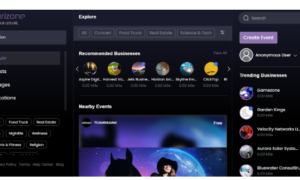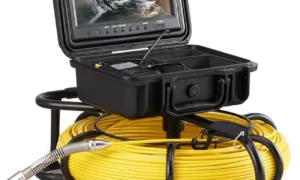Wondering how to organize a corporate event? Organizing a business event can be an exciting venture, offering a platform to showcase ideas, foster connections, and elevate your brand. Whether you’re gearing up for a product launch, a conference, or a networking opportunity, meticulous planning is the key to success.
In this guide, we’ll break down the essential steps and best practices for planning business events effectively. From setting clear goals to navigating the logistics and executing a seamless program, we’ll walk you through the process with clarity and simplicity.
So, let’s dive in and uncover the strategies and tips for effective business event management that make for a standout business event!
Setting Goals
The first crucial step in planning a business event is defining its purpose by setting clear and achievable goals. Think of goals as your event’s roadmap—they guide every decision you make. Here’s a quick corporate event planning checklist to kickstart your goal-setting process:
- Identify the Purpose: Clearly define why you’re organizing the event. Is it to launch a product, educate your audience, or enhance industry relationships?
- Target Audience: Determine who you want to attend. Are you catering to existing clients, potential customers, or industry experts?
- Measurable Objectives: Set specific, measurable, achievable, relevant, and time-bound (SMART) objectives. This could include a target number of attendees, leads generated, or social media impressions.
- Align with Brand Strategy: Ensure your goals align with your overall business and brand strategy. The event should contribute to your long-term objectives.
- Budget Considerations: Knowing how to budget for a business event is key to launching a successful event. Keep your budget in mind when setting goals. Be realistic about what you can achieve within your financial constraints.
Choosing a Venue
Wanna know how to select a venue for a business event? Selecting the right venue sets the stage for a successful business event. It’s more than just finding a space; it’s about creating an environment that aligns with your goals and enhances the overall experience for attendees.
- Selecting a Suitable Location: Consider the geographical and logistical aspects of the venue. Ensure it is easily accessible to your target audience, whether they are local or traveling. Assess the proximity to transportation hubs and the availability of parking.
- Checking Availability: Once you’ve identified potential venues, check their availability well in advance. Popular venues can get booked quickly, so securing your desired date is crucial. Flexibility in your event date may increase the options available to you.
- Considering Logistics and Amenities: Evaluate the logistics of the venue to ensure it can accommodate your event’s technical requirements. Check for essential amenities like audiovisual equipment, seating capacity, and catering facilities. A venue that aligns with your event’s needs contributes significantly to a seamless and enjoyable experience for attendees.
- Negotiating Terms: When you’ve found a suitable venue, don’t hesitate to negotiate terms. Discuss pricing, inclusions, and any additional services you may require. Negotiating effectively can help you secure a better deal within your budget constraints.
- Visit the Venue in Person: Whenever possible, visit the venue in person. This allows you to assess the ambiance, ask specific questions, and envision how the space will be utilized during your event. A firsthand look ensures that the venue aligns with your vision.
Creating a Timeline
Crafting a well-structured timeline is like giving your event a heartbeat—it keeps everything pulsing in rhythm. A timeline acts as your roadmap, ensuring that each task is completed efficiently and on schedule.
- Establishing Key Milestones: Start by identifying the key milestones for your event. This includes critical tasks such as securing the venue, confirming speakers, and launching promotional activities. These milestones serve as anchors for your timeline, helping you stay on track.
- Setting Deadlines for Tasks: Assign specific deadlines to each task on your timeline. Whether it’s designing invitations, finalizing catering arrangements, or testing audiovisual equipment, having clear deadlines creates a sense of urgency and accountability.
- Allotting Time for Contingencies: In event planning, flexibility is key. Allocate buffer time in your timeline for unforeseen circumstances or last-minute adjustments. This ensures that you have the flexibility to address unexpected challenges without causing major disruptions.
- Regular Check-ins: Schedule regular check-ins with your team to review the progress of tasks against the timeline. This allows you to identify any potential delays early on and make necessary adjustments. Effective communication is crucial to keeping everyone on the same page.
- Utilizing Project Management Tools: Consider using project management tools to create and visualize your timeline. Tools like Trello, Asana, or a simple Gantt chart can help you track progress, manage tasks, and collaborate with your team more efficiently.
Invitations and Promotion
Invitations and promotions are the gatekeepers to your event, enticing attendees and building anticipation. Effectively reaching your target audience and creating a buzz around your business event involves a strategic approach to invitations and promotion.
- Designing Invitations: Craft visually appealing and informative invitations that reflect the tone and theme of your event. Include essential details such as date, time, venue, and a brief overview of what attendees can expect. Whether digital or printed, invitations set the initial impression and set the stage for engagement.
- Utilizing Social Media: If you don’t know how to promote a business event, try using social media to amplify your event’s reach. Choose platforms that align with your audience and create engaging content to promote your event. Utilize event hashtags, countdowns, and sneak peeks to generate excitement and encourage attendees to share their anticipation.
- Early Bird Promotions: Encourage early registrations with enticing promotions or exclusive offers. Early bird discounts create a sense of urgency, driving early commitments from potential attendees and boosting overall registration numbers.
Logistics and Supplies
Navigating the logistics and ensuring you have the right supplies is like orchestrating a behind-the-scenes symphony that ensures your event runs smoothly.
- Coordination with Vendors: Establish clear communication channels with vendors, from caterers to audiovisual providers. Ensure they have a detailed understanding of your event requirements, including setup and breakdown times. Regular check-ins leading up to the event can help address any concerns or adjustments needed.
- Ensuring Technical Requirements: For events with technical components, verify that all necessary equipment is in working order. Conduct technical rehearsals and troubleshoot any potential issues beforehand. This includes audio systems, projectors, and any other technology crucial to the success of presentations or activities. A projector and screen rental can be your option for this.
- Planning for Decor and Supplies: Consider the aesthetic and functional aspects of your event space. Plan for decorations that align with your theme and enhance the overall ambiance. Additionally, ensure you have an ample supply of essential items, such as name tags, programs, and any materials needed for workshops or activities.
- Backup Plans for Contingencies: Anticipate and prepare for unexpected challenges by having contingency plans in place. This includes backup equipment, alternative transportation arrangements, and protocols for addressing issues that may arise during the event.
- Staff and Volunteer Coordination: If you have a team of staff and volunteers, ensure they are well-informed about their roles and responsibilities. Conduct pre-event briefings to review logistics, emergency procedures, and key contact information. A well-coordinated team contributes significantly to the seamless execution of your event.
Speakers and Program
Choosing engaging speakers and crafting a dynamic program are the heartbeats of your business event, capturing the attention of your audience and delivering value. A carefully curated lineup and well-structured program ensure that attendees leave with meaningful insights and a positive experience.
- Selecting Appropriate Speakers: Choose speakers who align with your event’s goals and resonate with your audience. Consider their expertise, relevance to your industry, and ability to communicate effectively. A diverse lineup of speakers can offer varied perspectives and enhance the overall richness of your event.
- Drafting a Program Agenda: Create a program agenda that balances engaging content with breaks for networking and relaxation. Clearly outline the schedule, including session topics, speaker names, and any interactive elements. A well-structured agenda helps attendees navigate the event and make efficient use of their time.
- Ensuring Engaging Presentations: Work closely with speakers to ensure their presentations are engaging and aligned with the event’s theme. Provide guidelines on time limits, audience interaction, and multimedia use. Encourage speakers to share practical insights, case studies, or interactive elements to keep attendees actively involved.
- Q&A and Networking Opportunities: Incorporate Q&A sessions and networking breaks into your program. These opportunities allow attendees to interact with speakers, ask questions, and connect with fellow participants. Facilitate discussions that encourage knowledge exchange and relationship building.
- Seamless Transitions: Ensure smooth transitions between program segments. Communicate timing and cues to speakers and support staff to maintain a cohesive flow. A well-executed program keeps attendees engaged and contributes to a positive event experience.
Registration Process
The registration process is the gateway to your business event, shaping the attendee experience from the very beginning. A streamlined and user-friendly registration process sets the tone for a positive interaction and lays the foundation for a successful event.
- Setting Up Online Registration: Simplify the registration process by offering an online platform. Utilize user-friendly registration tools that allow attendees to sign up easily. Ensure the platform captures essential information, such as names, contact details, and any specific preferences or requirements.
- Collecting Participant Information: Gather relevant information during the registration process to better understand your audience. Ask questions that align with the goals of your event, such as industry interests, job roles, or specific topics attendees are eager to explore. This data can help tailor the event to meet the needs of your audience.
- Providing Confirmation Details: Upon registration, promptly send confirmation details to attendees. Include essential information like event dates, times, and venue specifics. Clear communication at this stage sets expectations and helps attendees plan their participation effectively.
- Early Bird and Regular Registration: Encourage early engagement by offering early bird registration discounts. This not only incentivizes prompt registration but also provides you with valuable insights into the expected attendance numbers. Transition smoothly from early bird to regular registration phases to maintain a steady flow of participants.
- Utilizing Event Management Tools: Leverage tools for business event planning to streamline the registration process. These tools often offer features like badge generation, attendee tracking, and analytics. Automation can save time and reduce the risk of errors associated with manual data entry.
Elevate Your Next Event!
Now, armed with practical insights and the steps to plan a successful business meeting, it’s time to put your knowledge into action. Whether you’re gearing up for a product launch, a conference, or a networking opportunity, take the lessons learned here and elevate your next business event.
As you embark on the journey to transform your concert into a visual masterpiece, the choice of Audio-Visual Rental (AVR) companies becomes pivotal. For seamless integration of cutting-edge LED screens and LED video wall rental in Miami tailored to your unique needs, we recommend connecting with trusted AVR companies.
Start planning, set ambitious goals, and create an experience that leaves a lasting impact on your audience. Your journey to crafting memorable business events begins now!



































